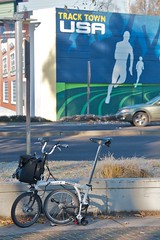
Before last week I hadn’t ridden my bicycle much in Eugene since Martha Steward and Busta Rhymes appeared on TV together. I grew up in Eugene and occasionally rode my bike to school when I was younger. Unfortunately that stopped when I got my driver’s license and was caught up in the “you’re only cool if you have a car” culture of high school.
During a recent visit it was interesting to be back in the city where I grew up, but with the perspective of an outsider getting to know the city from the seat of a bicycle.
Most of what I saw were positive changes that have made the decision to ride a bike an easier one (and it’s no fluke that Eugene ranks atop the U.S. when it comes to bike commuting). Read on to see how my old hometown has changed — for the better — for bikes…
Bike parking
Riding around Eugene as a kid I always had trouble finding a place to park my bike. Usually the bike racks I could find were poorly designed or poorly placed.
Now the city is flush with bike racks and bike corrals that fit in perfectly with Eugene’s quirky, artsy culture.
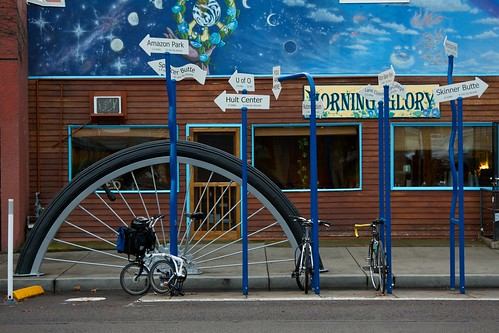
Way-finding signs
The only bike signs I remember seeing as a kid were the relatively unhelpful “Bike Route” signs. They’d let you know you were on a bike route, but they rarely had arrows directing you to where the route went.
Now there are signs everywhere. It may just be my perception but they seem to be more densely placed than here in the Portland-Metro area.
There are signs to bike paths…
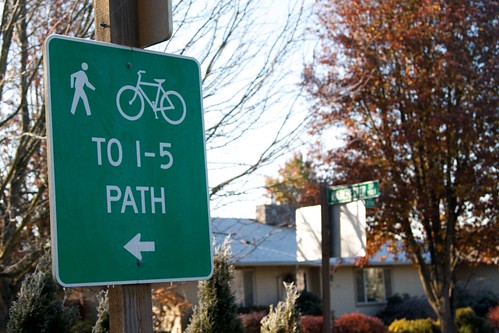
Signs on the UO campus…
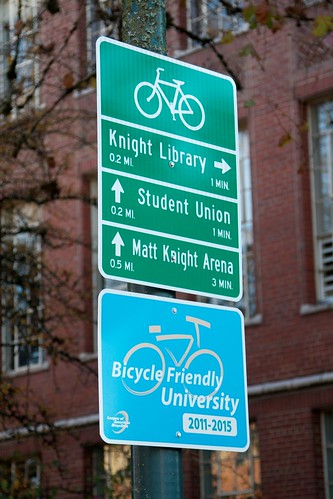
And signs virtually everywhere you’d want to travel…
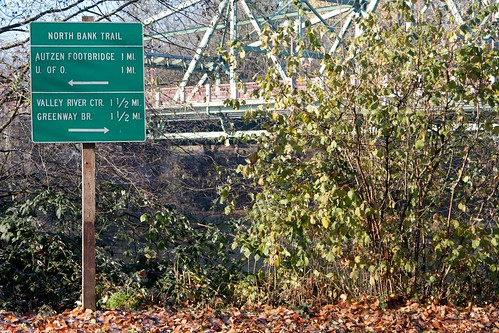
Pedestrian and bicycle bridges
Eugene’s also done a great job of thinking big when it comes to big physical barriers to bicycling.
Bridges over I-5 and Delta Highway have filled in major gaps in the transportation network, allowing bicycles and pedestrians much safer and easier access to schools, malls, and neighborhoods around those two freeways.
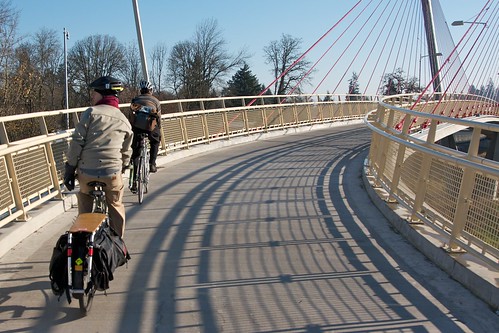
Cycle tracks, buffered bike lanes, and sharrows
Eugene has done some really impressive work improving the on-street facilities as well. Even places considered to be “bike friendly” a decade or more ago have continued to improve. The cycle track on Alder is one example but there are many others.
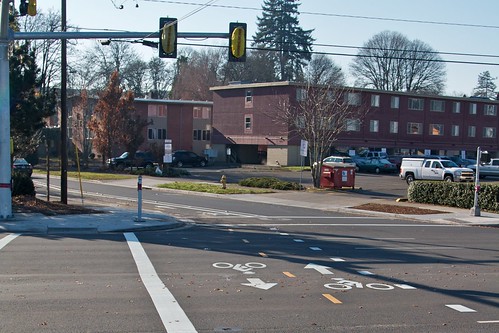
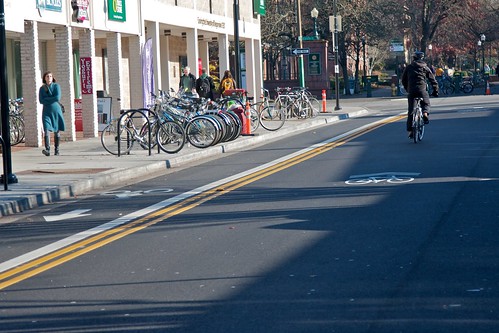
More vintage bikes
It seemed like there were more vintage bicycles out on the street than when I was younger. I’ve always associated older bicycles with the college crowd but I visited during winter vacation and campus was quiet.
Even with a noticeable lack of college students, everywhere I looked I found well-maintained bicycles from the ’70s and ’80s. One conclusion I can draw from the perceived trend is that people are eager to dust off the bicycles sitting in their garages and get out on the road.

All of these changes seem to lead to one thing:
More people on bicycles.
I definitely saw more people on bicycles on this last trip then when I was growing up in Eugene. Most of the time I was during the day, not at rush hour, but there was always a steady stream of riders along any path or street I was on.

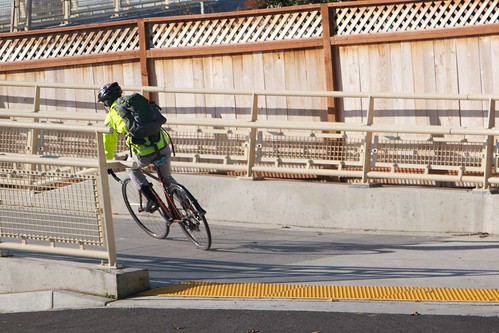

Eugene has done a great job encouraging bicycling and there may be lessons we can learn from our neighbors to the south. Have you ridden around Eugene recently? What new things have you seen?


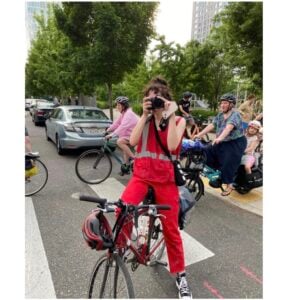

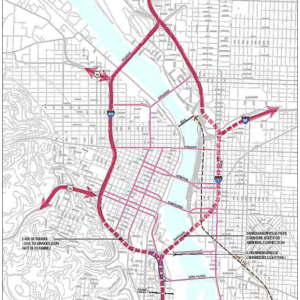
Despite Eugene being extraordinarily bike friendly and having a very usable (free for students) public transportation system, I am constantly appalled by the apparent number of my peer students who chose to pay exorbitant parking fees to drive and park on campus. I live in a very student dense housing area that is literally across the street from Alton Baker park (that has direct bike paths to campus) and has an express bus line directly to campus (no stops in between). Yet I see dozens of kids who think it fit to drive themselves back and forth to school. Incidentally it actually takes longer to drive and find parking than it does to ride a bike or take the bus, but it doesn’t stop some people.
I can tell you that many of the students who do drive are foreign exchange students with brand new luxury SUVs and expensive exotic sports cars. These people seem to have more money than common sense. Living the “American Dream”? Not so much.
Hi Cody – you bring up an interesting point – one that even Amsterdam is struggling with – how to convert / educate those without a bike background the option to bike as a mode. They have found it is often a mix of culture (girls don’t do x out in public), class (bikes are for the poor), and lack of training (how to ride and bike as transport) that licks this group into driving.
Perhaps this is an opportunity for you or others to organize a student organization and service on campus. (I assume such organizations can seek student funds for said activity.)
And for US students, many transportation choices are made by parents before students leave for their freshman year. Does the student packet include bike transport as an option – including a bike map, etc. ? That might be a place to start.
There’s the UO Bike Program which works on this kind of stuff:
http://www.uocycling.com/uo-bike-program/
or on FB:
http://www.facebook.com/pages/UO-Bike-Program/257296640947033#!/pages/UO-Bike-Program/257296640947033?sk=wall
must conform..must conform.. must conform…
“These people’s *parents* seem to have more money than common sense.”
As this example demonstrates, how to get around for these individuals isn’t about practicality, speed, efficiency, cost. It is about the highly subjective notion of convenience–a socially constructed notion if there ever was one. Or status. Short of making it fashionable/cool/sexy to bike I’m not sure what could (or should) be done about the ~1% who seem at this stage to be immune to the bicycle’s allure.
I actually used to know a guy back at UO who drove a brand-new Ferrari to class. But I rode my bike back then – was probably the only person I knew who was!
Sorry a typo above: “licks” should be “locks”
As for those retro bikes, I’m too old to say this with certainty — and it’s maybe kind of presumptuous to suggest anyway — but I think there is a certain coolness to those retro clunkers among some 20-somethings. Just an observation, based partly on my college-age niece’s love of this super junky, broken down, squeaky old Huffy.
There’s also the advantage of a retro-clunker being a little less of a theft target — although I’m sometimes shocked at the price of ’70s-era Schwinn Continentals you see at fle markets and such.
Correction:
Eugene is not “flush” with bike corrals. There are three bike corrals, and they are art projects (and the usual boring public art, imo) as much as they are transportation projects. The one in the photograph can only hold ten bikes, and it’s uncomfortable enough to use that the private racks twenty feet away seem to fill up first. Eugene spent a huge proportion, maybe even the majority, of a ~$100k bike parking project on art. Until it has more than a minuscule budget for this kind of thing, Eugene should focus more on transportation needs and less on uninteresting decorative frippery.
Eugene’s bike scene, like everything else here,* seems to be inspired and managed by hippy-dippy pie-in-the-sky-types. They seem to think that every little project or infrastructure improvement, no matter how suboptimal or wasteful, is the best thing since sliced ganja brownies. Eugene has a lot to learn from Portland’s data-driven processes and plans, but it will remain incapable of doing so until people start taking off their rose-colored glasses.
*except for the stuff inspired and managed by developers and rednecks. There is not much middle ground.
Zach, you are right on. UNlike the author of this post, I have been continuously bike-exclusive for the past twenty years. The bicycle establishment in Eugene is just as you describe: lots of spendy projects so people think they are being green, but nothing that really makes a difference to real cyclists. Sharrows are merely a “reminder” to motorists that cyclists don’t belong on all streets, just on streets reserved for them. The bike corrals suck, are impractical for securing bikes, and cost way too much. An alternative plan could have been to take that $100K and allow small grants to local businesses to improve their frequently substandard or non-existent bike racks.
I know everyone thinks those green lanes are a great idea, but they acr=tually make the pavement SLIPPERY and more dangerous for bikes. Besides which no motorist knows what they are for. And to those who say people will get used to them over time, I say , right, just like they are used to using bike lanes as a parking strip.
Skinner City, thanks for sharing your perspective from the last 20 years. I’ve heard from you and a few others regarding the bike corrals and how the money could have been spent differently.
The green bike boxes have made a difference in a lot of places I (and others) ride and I’ve never had a problem with them being slippery (but maybe I haven’t hit them just right in the rain or something).
This certainly won’t be my last trip to Eugene and I’m interested to see how people’s behavior “evolves” (or doesn’t) as the Alder cycle track ages and everyone gets used to it.
Feel free to send me your thoughts on what I should see around Eugene, bike-wise, next time I visit. I’d love to hear more of your perspective.
will[at]bikeportland.org
Hey, skinner
You know, I agree with you on the sharrow issue. The more I see them, the more I question their value. And I was one of thpse who thought WTF about the original Defazio bridge shown in the photo at the top of this post — since it was so redundant of the Ferry St. Bridge. And I also appreciate the perspective you bring to my blog when you comment there. But I cycle around Eugene a lot (been living there 13-1/2 years), and I don’t share your overall impression that Eugene is not that bike friendly. There are spots I wish were better, but overall, I have few problems. As for the corrals, well, I appreciate the effort to make them fun — and I don’t think there is a massive shortage of bike parking. But where is this $100,000 figure coming from?
Anyway, skinner, maybe we should go for a ride some time — show me what you like around Eugene and don’t like. E-mail me. Address is on my blog.
oops, actually the photo of the Defazio bridge was on another post. sorry.
Yeah. sorry about that $100K figure, I cribbed it directly from Zach. He may have more info than I, but here: (http://blogs.eugeneweekly.com/eugenecycles/deer-parking-artistic-bike-corrals) it says the city paid $12,000 and used 1000 hours of volunteer labor.
I think my point remains valid, in that I imagine that bike racks can be built for less than $4,000 each. Toss in the DeFazio bike bridge, built a few dozen yards from a newly-expanded biketrack on the Ferry Street Bridge, price tag $5 million (if I remember correctly) and like projects, I think you could make a case for squandering of public resources such as would not be tolerated on highway projects.
Besides which, while the big bike wheel at Morning Glory has a certain whimsical charm (though it can only lock up a couple bikes), the “bad-taste Christmas lawn ornaments” at the Kiva make me want to go exterminate all the artists in the world.
A city is a good cycling city only insofar as its motorists behave in such a way to make it so. As long as penalties for assaultive driving (and I would not dilute that concept with intent on the part of the driver: I consider any negligence on the part of a driver to be tantamount to my walking into my front yard and randomly firing off rounds from my deer rifle. In other words, not trying to kill anybody, but not trying not to, either) remain nominal, it will be open season on cyclists in Oregon.
Where are you getting the $100,000 figure? News reports I saw said the corrals were designed and built by LCC design students with materials purchased by the city for a cost of $4,000 per corral — so $12,000 for all three (including one yet to be installed).
Data-driven? Like the North Williams street re-striping/bike lane project that has been stalled due to neighborhood racial issues?
The city did not select or forego that project based on neighborhood desires. It’s simply responding to an issue that’s cropped up.
The photo taken on the Delta bike bridge captured (probably) the only bikes to use that bridge all of that week. The Delta and I-5 Gateway bridges were described by one Eugene bike advocate as “a white elephant” because they are so seldom used and cost a LOT of money. People in this town like to overstate the usefulness of most of these projects, just as they overstate their own usefulness to the community.
At least when I was in town there were a lot more bicycle on that bridge and on the one over I-5 too.
After my ride around town with Bob and Shane I used the I-5 bridge probably twice a day for another four days. Every time I went over the bridge I passed at least three or four people on bikes and at least two or three joggers on the path and the bridge.
Most of those trips were not at rush hour though, so I’m not sure how that influences traffic patterns in the area.
I agree with Will about the I-5 bridge. I find it pretty useful and well-used enough by others. Can’t speak for the Delta one, except to say I never have need to use it.
Despite its liberal reputation, Eugene is a very divided place politically. The ideology of “motorist convenience above all else” is still entrenched here. Because of the impossibility of solidarity behind any project that violates that norm, there is surprisingly little that can be accomplished in bike or transit projects without some embarrassing compromises.
The location of the I-5 bridge, for instance, is far north of the Gateway Mall’s popular stores, and this is so because planners did not wish to inconvenience mall car traffic. And does the new EmX bus “rapid transit” [ironic quotes] line not follow the current #12 route, even though it was easily the fastest and most desired alternative? Strip mall owners on Coburg Road feared buses would impede driveway access a bit. It’s hard to imagine a bike or transit project in Portland being so seriously compromised by such concerns.
That said, it’s heartening to see the Alder cycle track completed. It was done right, and the new northbound route it provides is useful.
“And why does the new EmX bus…” 🙂